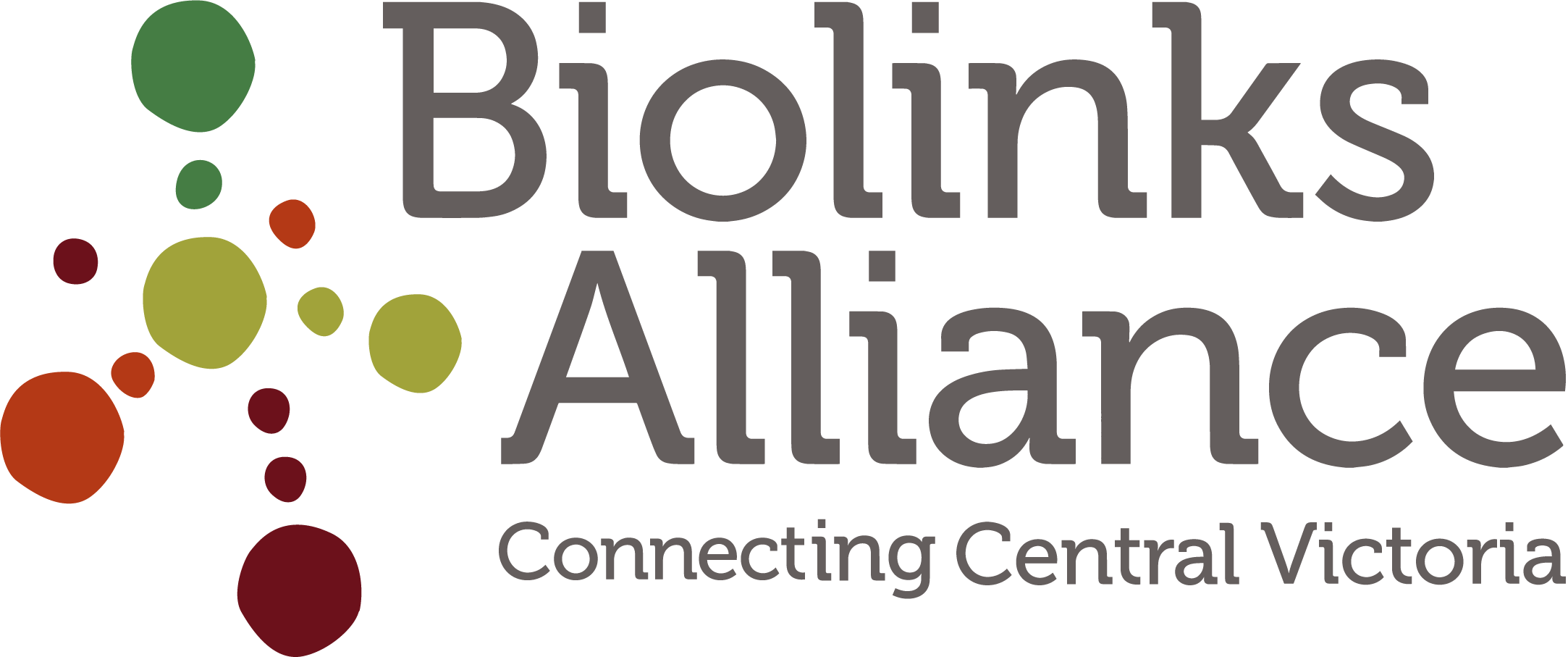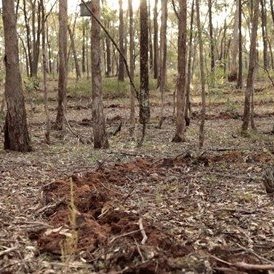Box-Ironbark Forest Restoration - Spring Plains Watershed Repair Project
Biolinks Alliance’s novel 138 hectare large-landscape repair pilot project in Spring Plains Nature Conservation Reserve (NCR) near Heathcote is the first of its kind in Victoria.
The Spring Plains Watershed Repair pilot project, on Taungurung Country, aims to restore the health of a gully in Box-Ironbark Forest using a combination of innovative ecological repair techniques.
As a pilot project within the Heathcote Local to Landscape plan, it forms part of a larger, long-term strategy for ecological restoration of the region.
Spring Plains NCR is an important migratory stopover for critically endangered Swift Parrots. This pilot project will increase productivity of the forest, ensuring more regular and abundant flowering in the trees that Swift Parrots and many other species rely on for sustenance. This reduces the distance that Swift Parrots will have to fly in search of food, conserving their energy and increasing their chance of returning to their breeding grounds in Tasmania safely.
This project paves the way for a new approach to building climate resilience and restoring biodiversity in Goldfields landscapes at increased scale and speed. Biolinks Alliance will share and help to adapt this approach for use in other landscapes across the region.
Swift Parrots. Image credit: Brendan Sydes, Biolinks Alliance Board Chair
Innovative ecological repair techniques to increase watershed absorbency
After three years of planning, obtaining approvals and philanthropic funding, and consultation including with government, Traditional Owners, private sector and the community - Biolinks Alliance completed on-the-ground works between June-September 2023. These works aim to restore hydrological function to this forest, a landscape degraded by intensive gold mining, agriculture and forestry.
The combination of ecological repair techniques used included:
- Contour ripping
- Ponding along the valley bottom
- Ecological thinning
Together, these methodologies look to increase the watershed absorbency of the gully, making it less ‘leaky’ while enhancing productivity. Works took place in Peter’s Gully within Spring Plains NCR.
Data collected from an integrated range of ecological monitoring techniques before on-ground works began within both Peter’s Gully and the adjoining White’s Gully (as a control site) will enable Biolinks Alliance to confidently measure the impacts of this project.
“It’s an example of a cutting edge and pragmatic approach to repairing damaged ecosystems and helping them to adapt to climate change.”
Urgency and climate change - repairing Victorian landscapes
Foundational repair - repairing Victorian landscapes
Sharing a new approach to large landscape repair
This project demonstrates new and important restoration methodologies that help us better prepare for climate change, that we can share with other conservation groups and networks. Our aim is to encourage the broader uptake of these sorts of landscape-scale repair projects throughout Central Victoria.
Using our own expertise and the scientific learnings from pilot projects such as this one, we are building the ecological literacy, skills and knowledge of Central Victorian communities, landholders and farmers to enable high-quality landscape-scale ecological repair to be rolled out across our region.
With Central Victoria having as many native species as the whole of Europe – despite Victoria being the most cleared state in Australia – we still have time to prevent further extinctions and protect our unique environment if we act now and work together using new approaches based on landscape science as demonstrated by our project at Spring Plains.
Progress of the ecological thinning
Footage of brush tailed phascogale in Spring Plains Nature Conservation Reserve obtained as part of the Volunteer Innovation Fund
Citizen Science
We have a thriving Citizen Science program running to monitor the ecological indicators that will help us determine the success of our efforts.
We hold monitoring of nestboxes, reptiles, kangaroos, small mammals (spotlighting), bird life, bats, pollinators, nocturnal invertebrates and more.
If you would like to become a citizen scientist or just to deepen your understanding of these forests then please get in touch or follow the link below.
Start your own project
If you are interested in undertaking your own project then we offer many services to help design projects that suit your site conditions. Our ecologists can help with site assessments to help you better understand what is required to restore your local ecosystem and contribute to lage scale restoration efforts.
Cameron O’Mara - Heathcote Local to Landscape Facilitator
For more information, contact Cameron O’Mara.
(cameron.omara@biolinksalliance.org.au)





